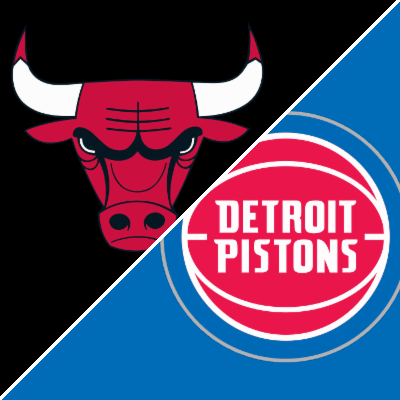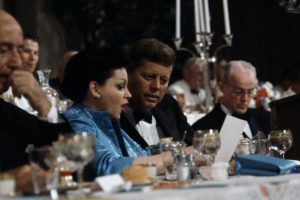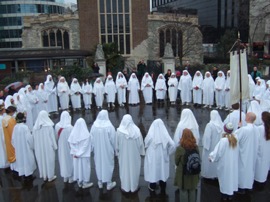They were known as the “Bad Boys”. The Detroit Pistons rose to power in the Eastern Conference of the National Basketball Association during the 1988-89 season. Thanks to their talent, toughness, aggressiveness, and swagger they took the Association by storm. But that had not stopped Chicago Bulls’ star, Michael Jordan, from lighting them up for 59 points in a single game that year, and 61 points in a game the year before, and the the Bulls won both games. Furious, Detroit Pistons’ head coach Chuck Daly vowed to find a way to stop Michael Jordan. His resulting game plan became known as the “Jordan Rules”.1

Equal parts mystique and reality, the underlying premise of the Jordan Rules were simple: make certain Jordan never got into a rhythm and try to exhaust him. When the Pistons had the ball, they would give it to whomever was being guarded by Michael Jordan. This was as good as wasting a possession and giving the ball back to the Bulls – Jordan was the reigning League MVP and Defensive Player of the Year – but to the Bad Boys, it was worth it to try and exhaust Jordan as much as they could so he could not carry the Bulls on offense.

When the Bulls were on offense, the Pistons would put their best defender on Jordan, and whenever Jordan went to the rim, the Piston defender would try and hit Jordan as hard as he could. “But when Jordan went by him, the real Rules were activated — knock the living hell out of Jordan when he drove to the rim. If he elevated — as he was wont to do — knock him out of the sky. Pound him. Punish him. Wear him down.”2
This was effective because Michael Jordan was the be-all and end-all for the Bulls. Everything they did ran through him. Their plan for crunch time? They did not have one. It just meant it was time for what was termed the “Archangel Offense”, after the Archangel Michael. The Chicago Bulls head coach Phil Jackson’s approach was “That’s where we give the ball to Michael Jordan and say, ‘Save us, Michael’ ”.3

Jordan, of course, was the best player in the NBA at the time, and the best in NBA history, so the Archangel Offense was not a bad idea, but it did leave them vulnerable to tactics like the Jordan Rules. The plan tried to overcome the Bulls by focusing on Jordan and making someone else beat them – they were happy to take their chances with someone else having the ball.
In 1988-89, the Bulls experimented by having Jordan play out of position at point guard to help counter the focus on him by letting Jordan involve his teammates more while letting him get more rest.4 The Bulls promptly steamrolled opponents with Jordan running the show and made it to the Eastern Conference Finals for the first time in Jordan’s career, before they ran aground against… the Detroit Pistons.

The Pistons, for their part, were happy to have Jordan initiating the offense for the Bulls. Pistons star Isiah Thomas and fellow guard Joe Dumars made a suggestion to their coach “Let’s not let Jordan beat us again. Let’s take a chance on letting their other guys beat us instead”.5 And it worked – using the Jordan Rules, the Pistons dispatched the Bulls and went on to winning the Pistons’ first-ever NBA Title. With their triumph over the Bulls, the focus on the Bad Boys and the Jordan Rules exploded, and its reputation grew into a myth larger than life. It actually turned into a psychological ploy as well. Pistons forward, Rick Mahorn, later said of the importance of the media focus on the ‘Jordan Rules’: “We were just throwing stuff out there. It was just a joke. Chuck throws it out there that we had some [top] secret plan to stop Jordan, and everybody just jumped on it. Everybody was writing stories about this strategy. When we kept reading about it, Isiah [Thomas] told us that we had gotten in their heads, and that’s how we had them beat.”6
In the season of 1989-90, Phil Jackson tried to prepare his team for the Jordan Rules. Still smarting after their Playoff series loss to the Pistons, he instituted the ‘Triangle Offense’. The idea was that all five players would be staggered around the floor in a certain way with three of them in the shape of a triangle, allowing for whoever had the ball to pass to any of his teammates and create ample opportunities for space to operate and involve others.

Once again, the Bulls piled up the wins in the regular season, finishing as the team with the second best record in the East, behind their longstanding rival, the Detroit Pistons. The two teams met in the Eastern Conference Finals rematch, where the Bulls pushed the Pistons to the brink, but lost a hotly contested Game 7 on the Pistons home floor, and the Pistons went on to win their second consecutive Championship. Encouraged by just how close they had come, Jackson had the Bulls double down on the Triangle Offense… and the next year, in 1990-91, the Bulls finally broke through.
That year, the Bulls finished in first place in the Eastern Conference, guaranteeing themselves home court advantage throughout the playoffs. For the third year in a row, the Bulls and Pistons played to determine who would represent the Eastern Conference in the NBA Finals, but this time, things were different. With an additional year of experience mastering the Triangle Offense, and with a strong supporting cast that could make opponents pay for focusing solely on Jordan, Jordan and the Bulls swept the Pistons in four games. Led by Isiah Thomas however, in a stunning display of bitterness and poor sportsmanship, most of the Pistons team walked off the floor with only a few seconds to go, so they could avoid congratulating the Bulls in a show of disdain and defiance. Only two Pistons shook hands with the Bulls once the buzzer sounded. While Thomas’ legacy as an NBA Hall of Famer is tarnished by this episode, he admitted he regretted his decision. When asked if he would do things differently if he could, he was quick to respond. “Absolutely. Looking back, in terms of what has happened, had I a chance to do it all over again, I would take the high road.”7

The Bulls dynasty and the Pistons would never meet again in the playoffs. The Bulls went on to win six NBA Titles in eight years, including two separate threepeats, interrupted only by the two years of Michael Jordan’s brief retirement before he returned. Micheal Jordan became universally acknowledged as the greatest NBA player of all time in the wake of the Bulls’ breakthrough, and became hugely influential in everything from shoes to logos.

The Pistons started to decline as their key players either left or retired, and have never made a Conference Finals since. Phil Jackson went on, in addition to his six titles as coach of the Bulls, to win five more titles as head coach of the Lakers using his Triangle Offense. While the rivalry between the Bulls and the Pistons burned bright and consumed the NBA, its fierceness is belied by the short time frame of its existence, only a few years in length. Yet, even now, the phrase “Jordan Rules” is still in the public mind, and the Bulls/Pistons rivalry remains one of the most famous episodes in NBA history.8
- Jack McCallum, “Mission Impossible,” November 1989, Sports Illustrated, https://vault.si.com/vault/1989/11/06/mission-impossible-no-one-shuts-down-michael-jordan-but-the-champion-detroit-pistons-have-developed-an-intricate-defensive-system-called-the-jordan-rules-that-comes-close-to-containing-him. ↵
- David Aldridge, “Bad Boys, Jordan Rules, Mariah, and More: These Palace Memories Will Endure,” November 2016, NBA.com, https://www.nba.com/article/2016/11/28/morning-tip-best-memories-palace-auburn-hills-detroit-pistons. ↵
- Harley Tinkham, “Bulls Have a Play for When It’s Beyond ‘Hail Mary’ Time,” May 1990, Los Angeles Times, https://www.latimes.com/archives/la-xpm-1990-05-28-sp-109-story.html. ↵
- Dan Devine, “How the Point-MJ Experiment Foreshadowed the Modern NBA,” March 2020, The Ringer, https://www.theringer.com/nba/2020/3/11/21174817/michael-jordan-triple-doubles-1989-chicago-bulls. ↵
- Chicago Tribune Staff, The Chicago Tribune Book of the Chicago Bulls: A Decade-by-Decade History, (Evanstown Illionois: Agate Midway, November 2016), pg 17. ↵
- “Chicago Bulls and Detroit Pistons Rivalry,” October 2009, Sportstalkline.com, https://directory.sportstalkline.com/sport/514157/chicago-bulls-and-detroit-pistons-rivalry-2-2/. ↵
- NBA TV, “Isiah Thomas Regrets ’91 Walkoff Against Bulls,” October 2013, NBCChicago.com, https://www.nbcchicago.com/news/sports/chicago-bulls-detroit-pistons-isiah-thomas-michael-jordan-nba-playoffs/1964192/. ↵
- Alonzo Warond, “Top 10 NBA Rivalries of All-Time,” April 2017, FadeawayWorld, https://fadeawayworld.com/2017/04/19/top-10-nba-rivalries-of-all-time/. ↵



34 comments
Cayden Garcia
What a legacy Michael Jordan has left on the basketball court. This article was great and refurbished certain things I had forgotten about the Pistons/Bulls rivalry. It’s crazy to think that one man was so good at basketball that a team-centered their entire plan around tiring him out. It’s even crazier how it worked.
I do have one question. Do you consider MJ to be the GOAT?
Again, great article!
Marcus Saldana
I watched the 30 for 30 bad boys and this article gives a great summary of the bad boys and how it was ended. The only thing I wish that was added were the NBA expansion teams because those teams took players from the pistons which in turn destroyed there dreams for a 3 peat. Because unlike archangles the pistions were a 10 man team. There’s no doubt that Micheal Jordan is one of the best players to have ever played. His ability to adapt to a team that was so focus on just hurting the man and not playing the game is incredible. Great article the pictures are iconic.
Emmett Pena
As an avid basketball fan, I had know idea that the term for the Chicago Bulls’ offense was called the “Archangel Offense.” After watching, “The Last Dance,” on TV I thought that I learned everything about the Bulls and the Bad Boys rivalry. This article explained greatly how intense the rivalry was between these two teams. It’s crazy how the media can have such an influence on the players’ games and their outcomes. Maybe if Detroit were never hyped up with the nickname, “The Bad Boys,” the Bulls offense would have played any differently?
Nicholas Burch
After just recently watching Michael Jordan’s new Netflix documentary “The Last Dance”, I saw this article and the title intrigued me. I didn’t know that the Bulls offense used to be referred to as the archangel offense. Since Michael Jordan’s level of athleticism and skills were something the NBA hadn’t seen before, all of Chicago relied on him to win basketball games. Although Jordan willingly took this role and always did whatever it took to win, it wasn’t fair to him to not have teammates he felt he could rely on in the end of the game. Thanks to the toughness of the Piston’s, the Bulls realized Michael needs help to win a championship. When the Bulls switched to a more team-oriented offense, they started to succeed. They became the first dynasty to ever win 2 separate 3-peats! Teamwork makes the dream work.
Richard Gutierrez
Reading the article “Adapting and Overcoming the Jordan Rules” really brought to my mind what an impactful player Michael Jordan was to the NBA. The NBA has had many “superstars” but none compare to Michael Jordan. This article really demonstrated how great a player Michael Jordan was and what lengths teams went to in order to try and get a win against Michael Jordan and the Bulls. This article displayed evidence on how one NBA team’s success could all be centered around one player. The Jordan rules helped the Detroit Pistons to beat Michael Jordan mentally and physically. The Jordan Rules also brough to light that superstars alone cannot win championships. Head Coach Phil Jackson had to adjust his offense to rely on more of the team. Above all else, this article displayed how even the greatest of players need the support of a team in order to be successful.
Victoria Hoggard
I was unawake of the “Jordon Rules” but it does make a lot of sense considering how amazing of a player he was. It’s very interesting to read how Jordon, the Bulls, and Phil Jackson overcame the “Jordon Rules” by creating an even smarter approach, the triangle offense. It shows how amazing the team and Jordon were by overcoming difficult obstacles and still coming out on top. I loved this article, very informative and fun to read!
Aracely Beltran
Another great article Stephen! To be honest I never really cared about sports, let alone basketball. However, if a person hasn’t heard about Michael Jordan then they must be living under a rock because even I know who he is. It was nice to learn about him, I had no idea in what team he played either, but you know you’ve made it when you have shoes named after you.
Shriji Lalji
The Bulls vs Pistons is one of the great rivalries in the game. This article is very informative and much of the same information is mentioned in the ESPN documentary about Michael Jordan called “The Last Dance”. It is amazing to see how the era’s of basketball shifted from the Celtics to the Lakers then the Piston and finally the Bulls. This also goes to show the dominance Jordan had in the game.
Davis Nickle
I never knew about the “Jordan Rules” that this article discusses, though I have obviously heard of Michael Jordan. I really did not know about how threatening of a presence Jordan was on the court, but that is mainly due to my overall ignorance to basketball. I was really surprised to hear that the Pistons devised an entire plan to shut down Jordan’s flow. I was really impressed by their ingenuity.
Yuliana Vasquez
It was really interesting to hear the ” Jordan Rules”, I didn’t even know these existed. I mean I have never been super familiar with basketball, but I knew Michael Jordan was a great player. And to find out people would actually try to figure out a way to attack him, one single person is kind of crazy.